Abstract
The relationship between the endolymphatic potential (EP) and the sodium and potassium concentration gradients between endolymph and interstitial fluid was studied both by measuring the EP at varying concentrations of sodium and potassium in endolymph and by measuring the effect of a depressed EP on the concentrations of these cations. Ethacrynic acid was used in dogs to change the concentration of sodium and potassium (meq/liter) in endolymph from 5.8 and 148 to 134 and 24.3, respectively. No change in the EP accompanied these alterations. In a second series of experiments the EP was reduced from + 72 mV to + 31 mV for a mean duration of 20 min. No change in the concentration of sodium and potassium in endolymph was found during the period of reduced EP. These data suggest that there is little relationship between the EP and the sodium and potassium concentrations in endolymph.
Full text
PDF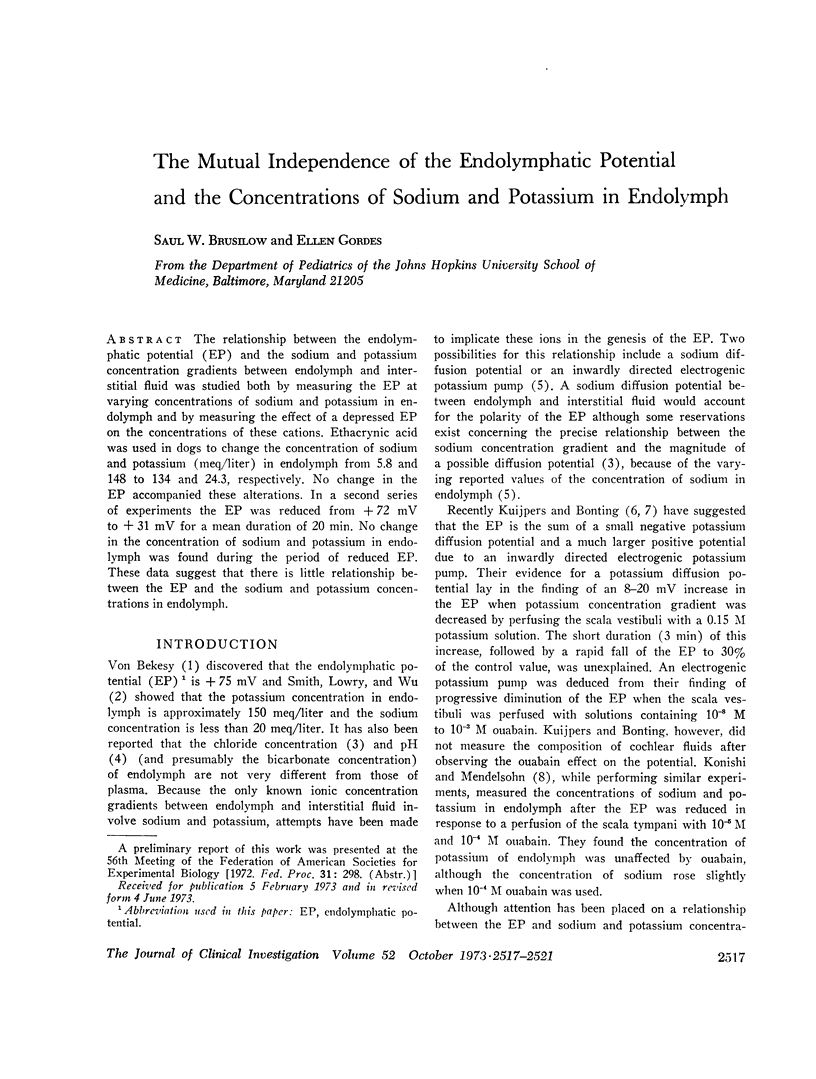
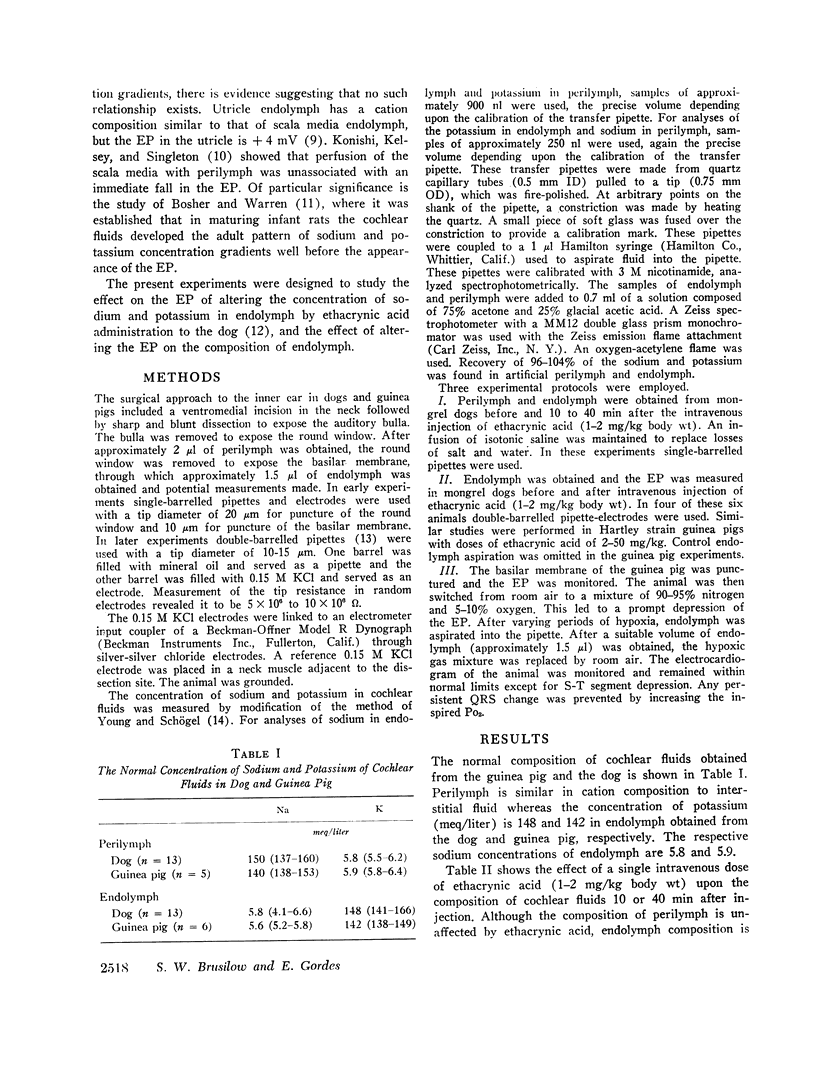
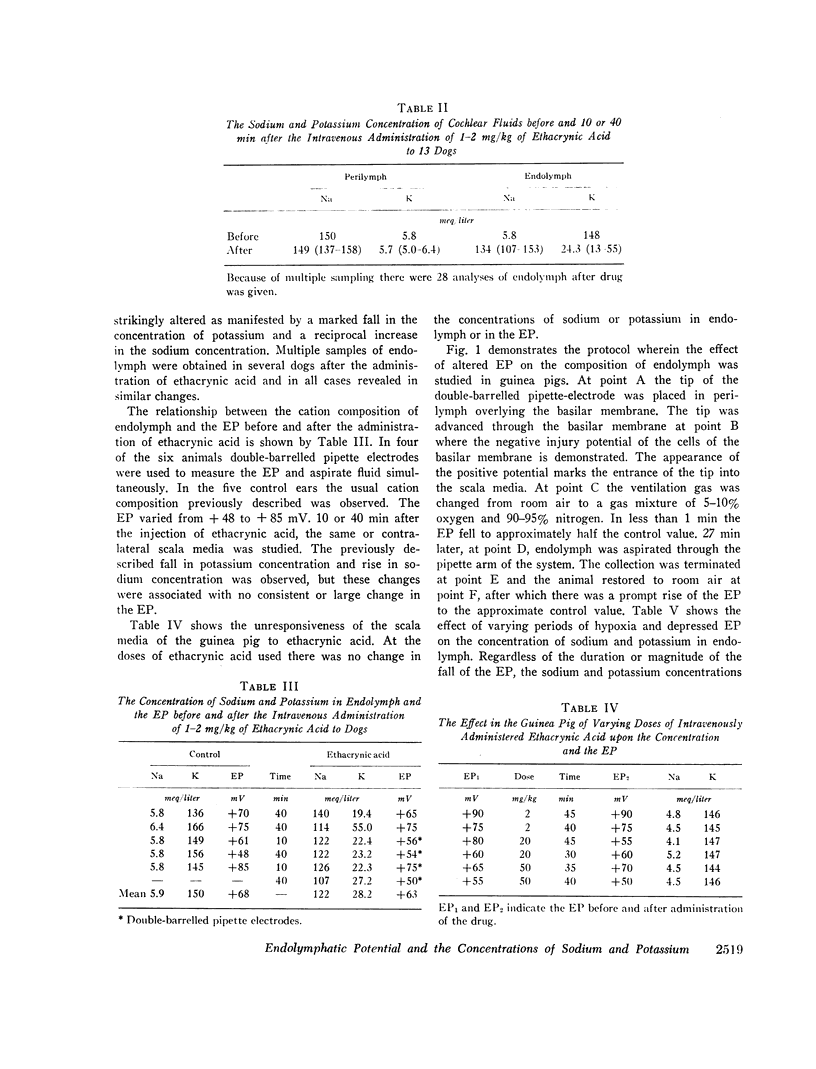
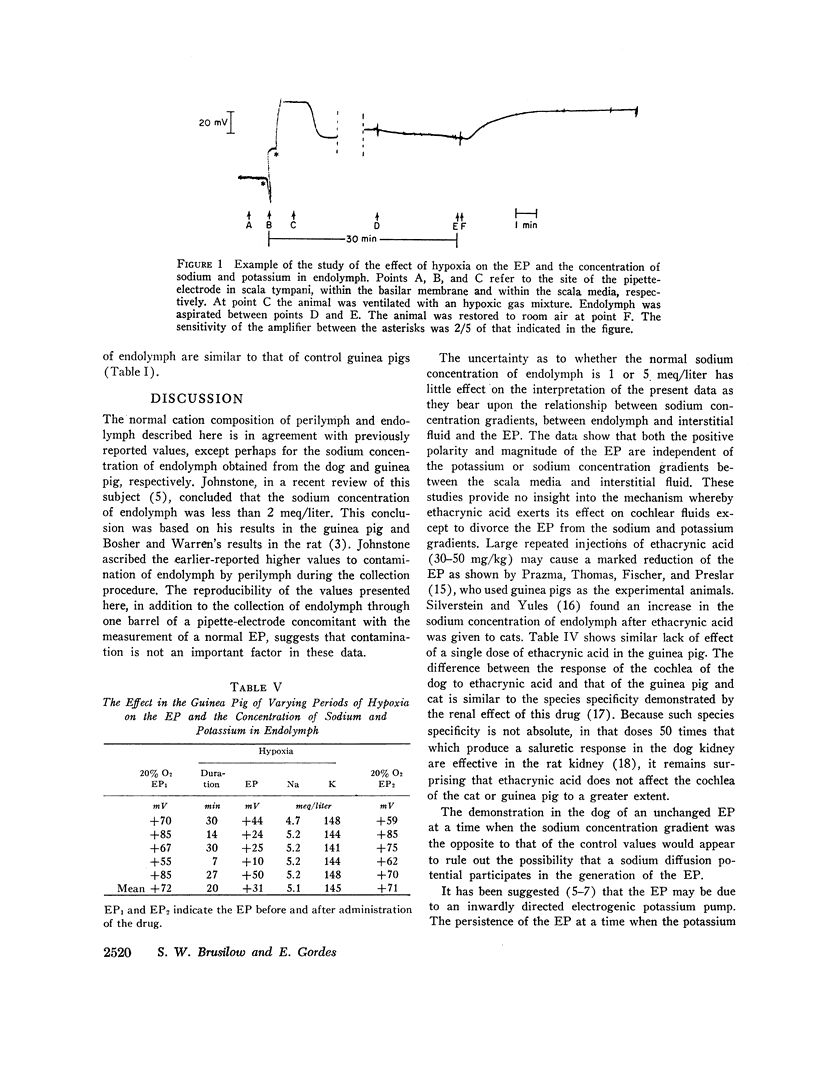
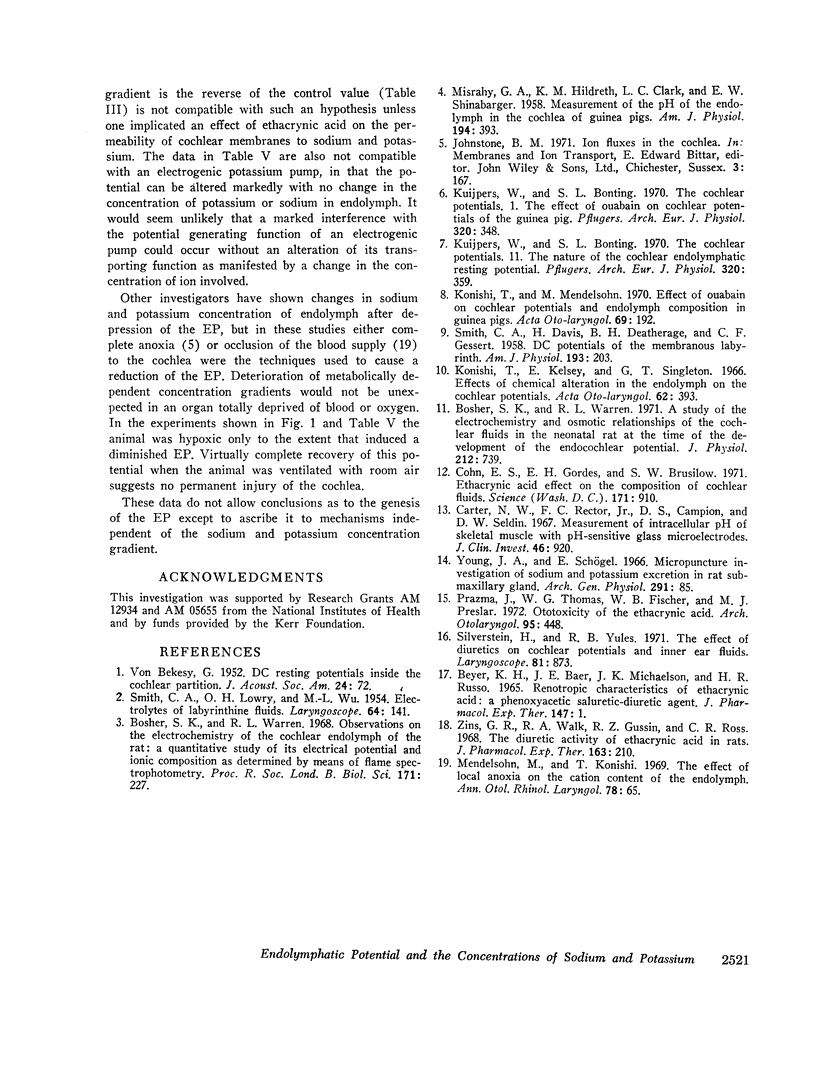
Selected References
These references are in PubMed. This may not be the complete list of references from this article.
- BEYER K. H., BAER J. E., MICHAELSON J. K., RUSSO H. F. RENOTROPIC CHARACTERISTICS OF ETHACRYNIC ACID: A PHENOXYACETIC SALURETIC-DIURETIC AGENT. J Pharmacol Exp Ther. 1965 Jan;147:1–22. [PubMed] [Google Scholar]
- Bosher S. K., Warren R. L. A study of the electrochemistry and osmotic relationships of the cochlear fluids in the neonatal rat at the time of the development of the endocochlear potential. J Physiol. 1971 Feb;212(3):739–761. doi: 10.1113/jphysiol.1971.sp009354. [DOI] [PMC free article] [PubMed] [Google Scholar]
- Bosher S. K., Warren R. L. Observations on the electrochemistry of the cochlear endolymph of the rat: a quantitative study of its electrical potential and ionic composition as determined by means of flame spectrophotometry. Proc R Soc Lond B Biol Sci. 1968 Nov 5;171(1023):227–247. doi: 10.1098/rspb.1968.0066. [DOI] [PubMed] [Google Scholar]
- Carter N. W., Rector F. C., Jr, Campion D. S., Seldin D. W. Measurement of intracellular pH of skeletal muscle with pH-sensitive glass microelectrodes. J Clin Invest. 1967 Jun;46(6):920–933. doi: 10.1172/JCI105598. [DOI] [PMC free article] [PubMed] [Google Scholar]
- Cohn E. S., Gordes E. H., Brusilow S. W. Ethacrynic acid effect on the composition of cochlear fluids. Science. 1971 Mar 5;171(3974):910–911. doi: 10.1126/science.171.3974.910. [DOI] [PubMed] [Google Scholar]
- Konishi T., Kelsey E., Singleton G. T. Effects of chemical alteration in the endolymph on the cochlear potentials. Acta Otolaryngol. 1966 Oct-Nov;62(4):393–404. doi: 10.3109/00016486609119584. [DOI] [PubMed] [Google Scholar]
- Konishi T., Mendelsohn M. Effect of ouabain on cochlear potentials and endolymph composition in guinea pigs. Acta Otolaryngol. 1970 Mar;69(3):192–199. doi: 10.3109/00016487009123353. [DOI] [PubMed] [Google Scholar]
- Kuijpers W., Bonting S. L. The cochlear potentials. I. The effect of ouabain on the cochlear potentials of the guinea pig. Pflugers Arch. 1970;320(4):348–358. doi: 10.1007/BF00588213. [DOI] [PubMed] [Google Scholar]
- Kuijpers W., Bonting S. L. The cochlear potentials. II. The nature of the cochlear endolymphatic resting potential. Pflugers Arch. 1970;320(4):359–372. doi: 10.1007/BF00588214. [DOI] [PubMed] [Google Scholar]
- MISRAHY G. A., HILDRETH K. M., CLARK L. C., SHINABARGER E. W. Measurement of the pH of the endolymph in the cochlea of guinea pigs. Am J Physiol. 1958 Aug;194(2):393–395. doi: 10.1152/ajplegacy.1958.194.2.393. [DOI] [PubMed] [Google Scholar]
- Mendelsohn M., Konishi T. The effect of local anoxia on the cation content of the endolymph. Ann Otol Rhinol Laryngol. 1969 Feb;78(1):65–75. doi: 10.1177/000348946907800106. [DOI] [PubMed] [Google Scholar]
- Prazma J., Thomas W. G., Fischer N. D., Preslar M. J. Ototoxicity of the ethacrynic acid. Arch Otolaryngol. 1972 May;95(5):448–456. doi: 10.1001/archotol.1972.00770080684011. [DOI] [PubMed] [Google Scholar]
- SMITH C. A., DAVIS H., DEATHERAGE B. H., GESSERT C. F. DC potentials of the membranous labyrinth. Am J Physiol. 1958 Apr;193(1):203–206. doi: 10.1152/ajplegacy.1958.193.1.203. [DOI] [PubMed] [Google Scholar]
- SMITH C. A., LOWRY O. H., WU M. L. The electrolytes of the labyrinthine fluids. Laryngoscope. 1954 Mar;64(3):141–153. doi: 10.1288/00005537-195403000-00001. [DOI] [PubMed] [Google Scholar]
- Silverstein H., Yules R. B. The effect of diuretics on cochlear potentials and inner ear fluids. Laryngoscope. 1971 Jun;81(6):873–888. doi: 10.1288/00005537-197106000-00008. [DOI] [PubMed] [Google Scholar]
- Zins G. R., Walk R. A., Gussin R. Z., Ross C. R. The diuretic activity of ethacrynic acid in rats. J Pharmacol Exp Ther. 1968 Sep;163(1):210–215. [PubMed] [Google Scholar]


